hannahhaifisch
hi! i am 32, cis female, based in berlin. i like art and sciences.
203 posts
Latest Posts by hannahhaifisch

Sand and water make a remarkable team when it comes to building. But the substrate – the surface you build on – makes a big difference as well. Take a syringe of wet sand and drip it onto a waterproof surface (bottom right), and you’ll get a wet heap that flows like a viscous liquid. Drop the same wet sand onto a surface covered in dry sand (bottom left), and the drops pile up into a tower. Watch the sand drop tower closely, and you’ll see how new drops first glisten with moisture and then lose their shine. The excess water in each drop is being drawn downward and into the surrounding sand through capillary action. This lets the sand grains settle against one another instead of sliding past, giving the sand pile the strength to hold its weight upright. (Video and image credit: amàco et al.)



Physicists Confirm Quantum Theory Proposed in 1930s
http://www.sci-news.com/physics/quantum-tunneling-water-05422.html
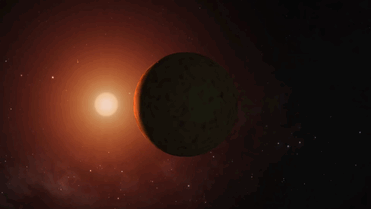
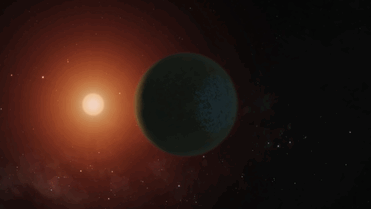
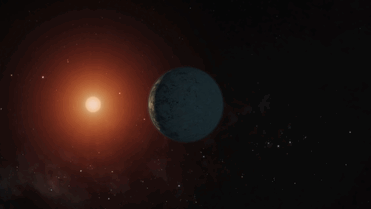
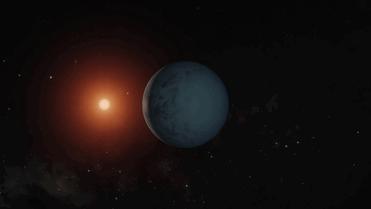


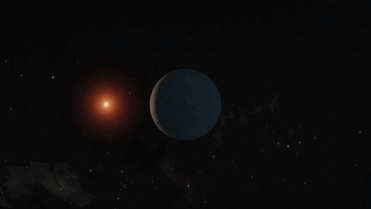
TRAPPIST-1 Planets - Flyaround Animation
Credit: NASA/Spitzer

Exhibition
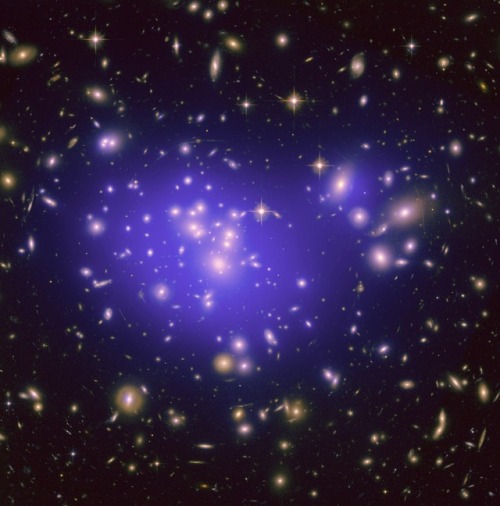
Galaxy Cluster Abell 1689
This image shows the galaxy cluster Abell 1689, with the mass distribution of the dark matter in the gravitational lens overlaid (in purple). The mass in this lens is made up partly of normal (baryonic) matter and partly of dark matter. Distorted galaxies are clearly visible around the edges of the gravitational lens. The appearance of these distorted galaxies depends on the distribution of matter in the lens and on the relative geometry of the lens and the distant galaxies, as well as on the effect of dark energy on the geometry of the Universe.
Credit: NASA/ESA

BLACK HOLES WITH RAVENOUS APPETITES DEFINE TYPE I ACTIVE GALAXIES
** Synopsis: New research suggests that the central black holes in Type I and Type II active galaxies consume matter at different rates, upending popular theory. **
For decades, astronomers have tried to pin down why two of the most common types of active galaxies, known as Type I and Type II galaxies, appear different when observed from Earth. Although both galaxy types host voracious supermassive black holes known as active galactic nuclei, which actively swallow matter and emit massive amounts of radiation, Type I galaxies appear brighter to astronomers’ telescopes.
New research from an international team of astronomers, with contributions from the University of Maryland, makes a major modification to a popular theory called the unified model. According to this model, the active nuclei of Type I and Type II galaxies have the same fundamental structure and energetic profile, but appear different solely because the galaxies point toward Earth at different angles. Specifically, Type II galaxies are tilted such that they are obscured by their own rings of dust, making Type I galaxies appear brighter by comparison.
The new results, published September 28, 2017, in the journal Nature, suggest that Type I and Type II galaxies do not just appear different – they are, in fact, very different from each other, both structurally and energetically. The key factor that distinguishes Type I and Type II galaxies is the rate at which their central black holes consume matter and spit out energy, according to the researchers.
“The unified model has been the prevailing wisdom for years. However, this idea does not fully explain the differences we observe in galaxies’ spectral fingerprints, and many have searched for an additional parameter that fills in the gaps,” said Richard Mushotzky, a professor of astronomy at UMD and a co-author of the study. “Our new analysis of X-ray data from NASA’s Swift Burst Alert Telescope suggests that Type I galaxies are much more efficient at emitting energy.”
To conduct the study, Mushotzky and his colleagues re-examined data from 836 active galaxies detected by NASA’s Swift Burst Alert Telescope that strongly emit high-energy, or “hard,” X-rays – the same X-rays that medical technicians use to visualize the human skeleton.
To measure the mass and growth rate of these galaxies’ active nuclei – the supermassive black holes at the galaxies’ centers – the researchers used data from 12 different ground-based telescopes spread across the globe to complement the data from the Swift satellite.
“This project began in 2009, as part of my doctoral work at UMD, and has radically grown with the help of more than 40 researchers across the globe,” said Michael Koss (M.S. ‘07, Ph.D. ‘11, astronomy), a research scientist at Eureka Scientific, Inc. and a co-author of the paper. “When I started out, I spent a month of lonely nights by myself at the Kitt Peak National Observatory observing a few dozen galaxies. I never dreamed we would eventually expand to such a large sample, enabling us to answer many amazing scientific questions for the first time.”
By comparing differences in the X-ray spectra between Type I and Type II galaxies, the researchers concluded that, regardless of which way the galaxy faces Earth, the central black holes in Type I galaxies consume matter and emit energy much faster compared with the black holes at the center of Type II galaxies.
“Our results suggest this has a lot to do with the amount of dust that sits close to the central black hole,” said Mushotzky, who is also a fellow of the Joint Space-Science Institute. “Type II galaxies have a lot more dust close to the black hole, and this dust pushes against the gas as it enters the black hole.”
For decades, astronomers preferentially studied Type II galaxies, largely because the active nuclei of Type I galaxies are very bright, making it difficult to see the stars and gas clouds that constitute the rest of the galaxy. Because the unified model suggested that all active galaxies were fundamentally the same, astronomers focused their efforts on the galaxies that host Type II active nuclei because they are easier to observe.
“But now, because our results suggest that the two types of galaxies are indeed fundamentally different, it is likely that a lot of researchers will re-evaluate their data and take another look at Type I galaxies,” Mushotzky said. “By putting us on a path to better understand the differences between the galaxies that host Type I and Type II active nuclei, this work will help us better understand how supermassive black holes influence the evolution of their host galaxies.”
IMAGE….Many active galactic nuclei are surrounded by large, dark, donut-shaped clouds of gas and dust, as seen in this artist’s rendering. A popular theory known as the “unified theory” suggests that differences in the brightness of active galactic nuclei, as seen from here on Earth, are due to the placement of this donut of obscuring dust relative to our angle of observation. However, new research suggests that two of the most common types of active galactic nuclei do, in fact, exhibit fundamental physical differences in the way they consume matter and spit out energy. Credit: NASA/JPL-Caltech

Tesla at work. (via Reddit)

demonstration of quantum trapping

Another Ferrofluid representation






Ferrofluid!
Magnetic Field Viewer

ESIST.Tech/tv/ recommends | Physics | CERN: The Big Bang Machine | https://esist.tech/tv/

Exchanges of identity in deep space
By reproducing the complexity of the cosmos through unprecedented simulations, a new study highlights the importance of the possible behaviour of very high energy photons
Like in a nail-biting thriller full of escapes and subterfuge, photons from far-off light sources, such as blazars, could go up against a continuous exchange of identity in their journey through the Universe. This is an operation that would allow these very tiny particles of light to escape an enemy which, if encountered, would annihilate them. This is the phenomenon studied by a group of researchers from the University of Salento, Bari, the National Institute for Nuclear Physics (INFN), the National Institute for Astrophysics (INAF) and SISSA thanks to brand new simulation models that reproduce the complexity of the cosmos as never before. Normally, very high energy photons (gamma rays) should “collide” with the background light emitted by galaxies transformed into pairs of matter and antimatter particles, as envisaged by the Theory of Relativity. For this reason, the sources of very high energy gamma rays should appear significantly less bright than what is observed in many cases.
A possible explanation for this surprising anomaly is that light photons are transformed into hypothetical weakly-interacting particles, “axions” which, in turn, would change into photons, all due to the interaction with magnetic fields. With these metamorphoses, a part of the photons would escape interaction with the intergalactic background light that would make them disappear. The importance of this process is emphasised by the study published on Physical Review Letters, which re-created an extremely refined model of the Cosmic Web, a network of filaments composed of gas and dark matter present throughout the Universe and of its magnetic fields. The aforementioned effects are now awaiting comparison with those obtained experimentally through Cherenkov Telescope Array new generation telescopes.
In this research, through complex and unprecedented computer simulations made at the CSCS Supercomputing Centre in Lugano, scholars have reproduced the so-called Cosmic Web and the magnetic fields associated with this to investigate the possibility, advanced from previous theories, that photons from a light source are transformed into axions, hypothetical elementary particles, on interacting with an extragalactic magnetic field. Axions could then be retransformed into photons by interacting with other magnetic fields. Researchers Daniele Montanino, Franco Vazza, Alessandro Mirizzi and Matteo Viel explain: “Photons from luminous bodies disappear when they encounter extragalactic background light (EBL). But if on their journey they head into these transformations as envisaged by these theories, it would explain why, in addition to giving very important information on processes that occur in the universe, distant celestial bodies are brighter than expected from an observation on Earth. These changes would, in fact, enable a greater number of photons to reach the Earth”.
In the simulations made by scientists, thanks to the wealth of magnetic fields present in the Cosmic Web’s filaments recreated with the simulations, the conversion phenomenon would seem much more relevant than predicted by previous models: “Our simulations reproduce a very realistic picture of the cosmos’ structure. From what we have observed, the distribution of the Cosmic Web envisaged by us would markedly increase the probability of these transformations”. The next step in the research? To compare simulation results with the experimental data obtained through the use of the Cherenkov Telescope Array Observatories detectors, the new-generation astronomical observatories, one of which is positioned in the Canary Islands and the other in Chile, that will study the Universe through very high energy gamma rays.
IMAGE….Through complex computer simulations, researchers have reproduced the so-colled Comsc Web and its magnetic fields Credit Vazza F., Bruggen M. Gheller, C., Wang P.

Physicists resolve long-standing mystery of structure-less transition
We normally associate conduction of electricity with metals. However, some of the high measured conductivities are found in certain organic molecular crystals. Metallic, semiconducting and even superconducting properties can be achieved in these materials, which have interested scientists for decades. Changing temperature or pressure causes phase transitions in the crystal structure of molecular conductors and their related conduction properties. Scientists can usually determine the crystal structure using X-ray diffraction. However, structural change accompanying phase transition in a particular organic crystal (TMTTF)2PF6 has defied examination for almost 40 years.
Now, a research team at Nagoya University has finally explained the mysterious structural changes of this phase transition and its related electronic behavior.
“Researchers have questioned that the TMTTF (tetramethyltetrathiafulvalene) salt shows a charge disproportionation transition at 67 Kelvin but no relevant changes in its crystal structure. This transition is a long-standing mystery known as a ‘structure-less transition’,” explains lead author Shunsuke Kitou.
Read more.

“The earth as seen from the moon.” The young astronomer; or, Helps to a knowledge of the leading constellations. 1891.

Photograph of the May 1919 solar eclipse captured by Arthur Eddington, which proved Einstein’s theory of general relativity.
Credit: SSPL/Getty Images

Quantum tunnelling
Tunneling is a quantum mechanical effect. A tunneling current occurs when electrons move through a barrier that they classically shouldn’t be able to move through. In classical terms, if you don’t have enough energy to move “over” a barrier, you won’t. However, in the quantum mechanical world, electrons have wavelike properties. These waves don’t end abruptly at a wall or barrier, but taper off quickly. If the barrier is thin enough, the probability function may extend into the next region, through the barrier! Because of the small probability of an electron being on the other side of the barrier, given enough electrons, some will indeed move through and appear on the other side. When an electron moves through the barrier in this fashion, it is called tunneling.

Quantum mechanics tells us that electrons have both wave and particle-like properties. Tunneling is an effect of the wavelike nature.

The top image shows us that when an electron (the wave) hits a barrier, the wave doesn’t abruptly end, but tapers off very quickly - exponentially. For a thick barrier, the wave doesn’t get past.
The bottom image shows the scenario if the barrier is quite thin (about a nanometer). Part of the wave does get through and therefore some electrons may appear on the other side of the barrier.
Because of the sharp decay of the probability function through the barrier, the number of electrons that will actually tunnel is very dependent upon the thickness of the barrier. The current through the barrier drops off exponentially with the barrier thickness
Source: nanoscience.com | Images: x | x | x



How spheres impact water has been studied for more than a century. The typical impact for a rigid sphere creates a cavity like the one on the upper left - relatively narrow and prone to pinching off at its skinny waist. If the sphere is elastic –squishy – instead, the cavity ends up looking much different. This is shown in the upper right image, taken with an elastic ball and otherwise identical conditions to the upper left image. The elastic ball deforms; it flattens as it hits the surface, creating a wider cavity. If you watch the animations in the bottom row, you can see the sphere oscillating after impact. Those changes in shape form a second cavity inside the first one. It’s this smaller second cavity that pinches off and sends a liquid jet back up to the collapsing splash curtain.
From the top image, we can also see that the elastic sphere slows down more quickly after impact. This makes sense because part of its kinetic energy at impact has gone into the sphere’s shape changes and their interaction with the surrounding water.
If you’d like to see more splashy stuff, be sure to check out my webcast with a couple of this paper’s authors. (Image credits: top row - C. Mabey; bottom row - R. Hurd et al., source; research credit: R. Hurd et al.)



Substances don’t have to be a liquid or a gas to behave like a fluid. Swarms of fire ants display viscoelastic properties, meaning they can act like both a liquid and a solid. Like a spring, a ball of fire ants is elastic, bouncing back after being squished (top image). But the group can also act like a viscous liquid. A ball of ants can flow and diffuse outward (middle image). The ants are excellent at linking with one another, which allows them to survive floods by forming rafts and to escape containers by building towers.
Researchers found the key characteristic is that ants will only maintain links with nearby ants as long as they themselves experience no more than 3 times their own weight in load. In practice, the ants can easily withstand 100 times that load without injury, but that lower threshold describes the transition point between ants as a solid and ants as a fluid. If an ant in a structure is loaded with more force, he’ll let go of his neighbors and start moving around.
When they’re linked, the fire ants are close enough together to be water-repellent. Even if an ant raft gets submerged (bottom image), the space between ants is small enough that water can’t get in and the air around them can’t get out. This coats the submerged ants in their own little bubble, which the ants use to breathe while they float out a flood. For more, check out the video below and the full (fun and readable!) research paper linked in the credits. (Video and image credits: Vox/Georgia Tech; research credit: S. Phonekeo et al., pdf; submitted by Joyce S., Rebecca S., and possibly others)

0008

NGC 4725, One-Armed Spiral Galaxy





Fluorite and Baryte
Locality: Berbes, Asturias, Spain

A movie showing the dynamics of the inner part of the Crab Nebula made using the Chandra X-ray Observatory.
Credit: NASA/CXC/ASU/J.Hester et al.

In slow motion, vortex rings can be truly stunning. This video shows two bubble rings underwater as they interact with one another. Upon approach, the two low-pressure vortex cores link up in what’s known as vortex reconnection. Note how the vortex rings split and reconnect in two places – not one. According to Helmholtz’s second theorem a vortex cannot end in a fluid–it must form a closed path (or end at a boundary); that’s why both sides come apart and together this way. After reconnection, waves ripple back and forth along the distorted vortex ring; these are known as Kelvin waves. Some of those perturbations bring two sides of the enlarged vortex ring too close to one another, causing a second vortex reconnection, which pinches off a smaller vortex ring. (Image source: A. Lawrence; submitted by Kam-Yung Soh)
Note: As with many viral images, locating a true source for this video is difficult. So far the closest to an original source I’ve found is the Instagram post linked above. If you know the original source, please let me know so that I can update the credit accordingly. Thanks!